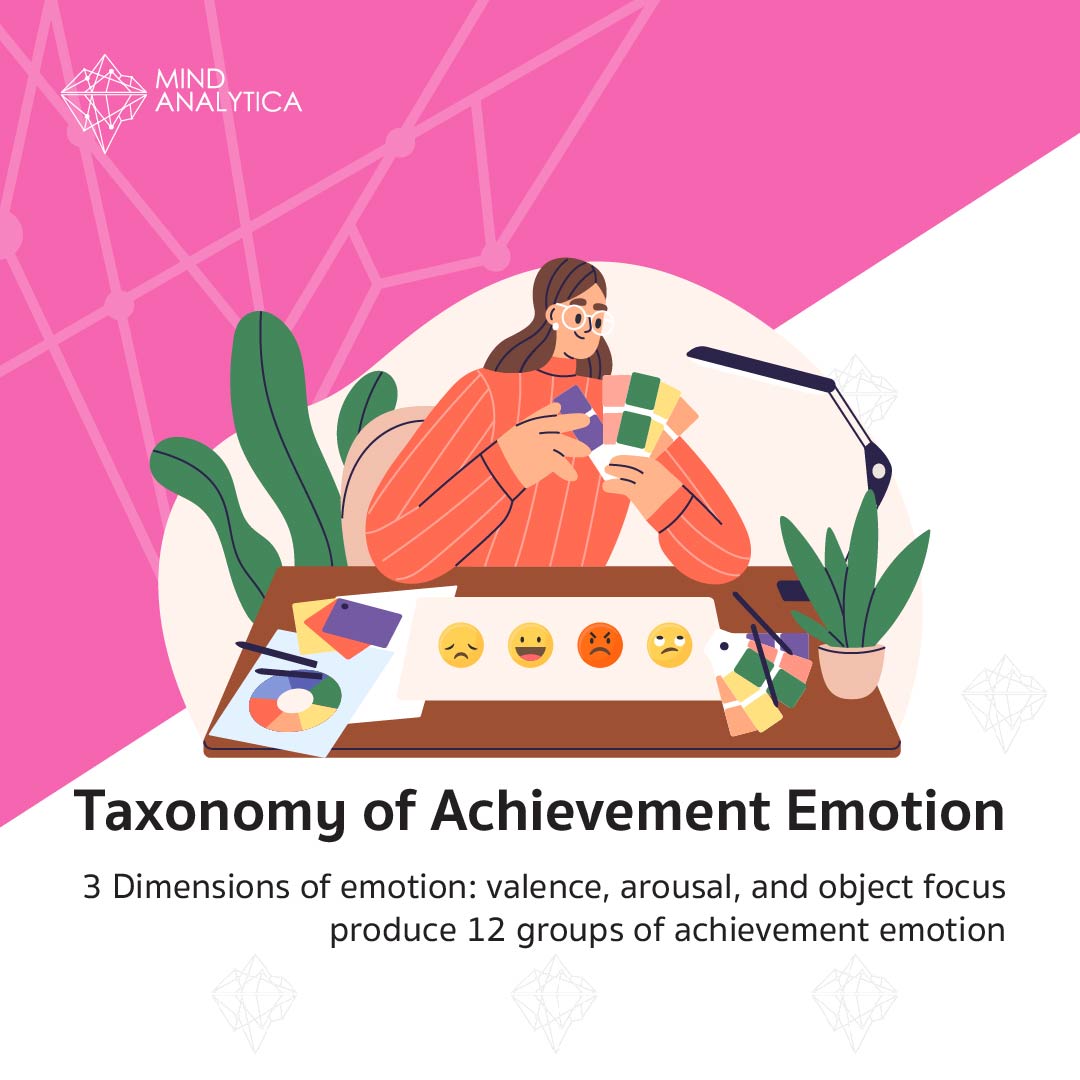Taxonomy of Achievement Emotions
7 สิงหาคม 2566 - เวลาอ่าน 3 นาที
Emotion refers to the reactions that humans and other living beings have towards diverse events or situations. These reactions encompass various components, including feelings (positive or negative), thoughts (such as anticipating a positive or negative future), or physiological responses (like trembling lips, shaky hands, widened eyes). The expression of emotions varies significantly from person to person. Some individuals tend to get angry easily, while others remain calm. Moreover, individuals can react differently to distinct events.
This article aims to present a method for categorizing human emotions based on their responses to different events and their resulting impacts on life achievements.
Research conducted by a group of psychologists led by Pekrun in the year 2023 proposed that human emotions resulting from events, which are outcomes of personal actions, can be divided into three dimensions:
Valence: This dimension divides emotions into positive and negative feelings. Examples of positive emotions are excitement and pride, while negative emotions include disappointment and boredom.
Arousal: This dimension separates emotions into states of arousal during a situation (e.g., hope, anger, anxiety) and after separating from it (e.g., relief, boredom, resignation).
Intent of Emotional Display: This dimension is divided into three categories:
Emotions displayed during ongoing activities, such as joy or boredom.
Emotions shown concerning future outcomes, like anxiety, hope, or relief.
Emotions expressed related to past events, such as pride, relief, or embarrassment.
These three dimensions combine to form 12 distinct emotional patterns.
The research began by administering questionnaires to sample groups about emotions resulting from various events, impacting life achievements. For instance, student questionnaires related to learning, while working-age group questionnaires were associated with job responsibilities. The results validated the hypothesized three-dimensional model with 12 emotional patterns. Additionally, it was observed that individuals tend to primarily exhibit one emotional pattern. For instance, some people consistently perceive the world positively, while others maintain a constant state of worry about the future.
The study also explored whether the different emotional patterns are related to other behaviors of individuals. It was found that only the Valence dimension of emotions (positive and negative) significantly correlates with other human behaviors. For instance, individuals who present a responsible self-image tend to exhibit more positive emotions and fewer negative emotions. Similarly, individuals who believe they can control their life outcomes tend to display more positive emotions and fewer negative emotions. Lastly, individuals who frequently express negative emotions are more likely to have health issues compared to those who consistently display positive emotions.
Although these findings shed light on the 12 emotional patterns, their direct connections to general human behaviors are not yet clearly defined. Further research is needed to understand how each emotional pattern relates to specific behaviors, like how higher levels of anxiety might correlate with certain behaviors, or how stronger feelings of guilt might manifest in behaviors. This research provides a promising starting point for future studies and theories in the field of emotion psychology.



